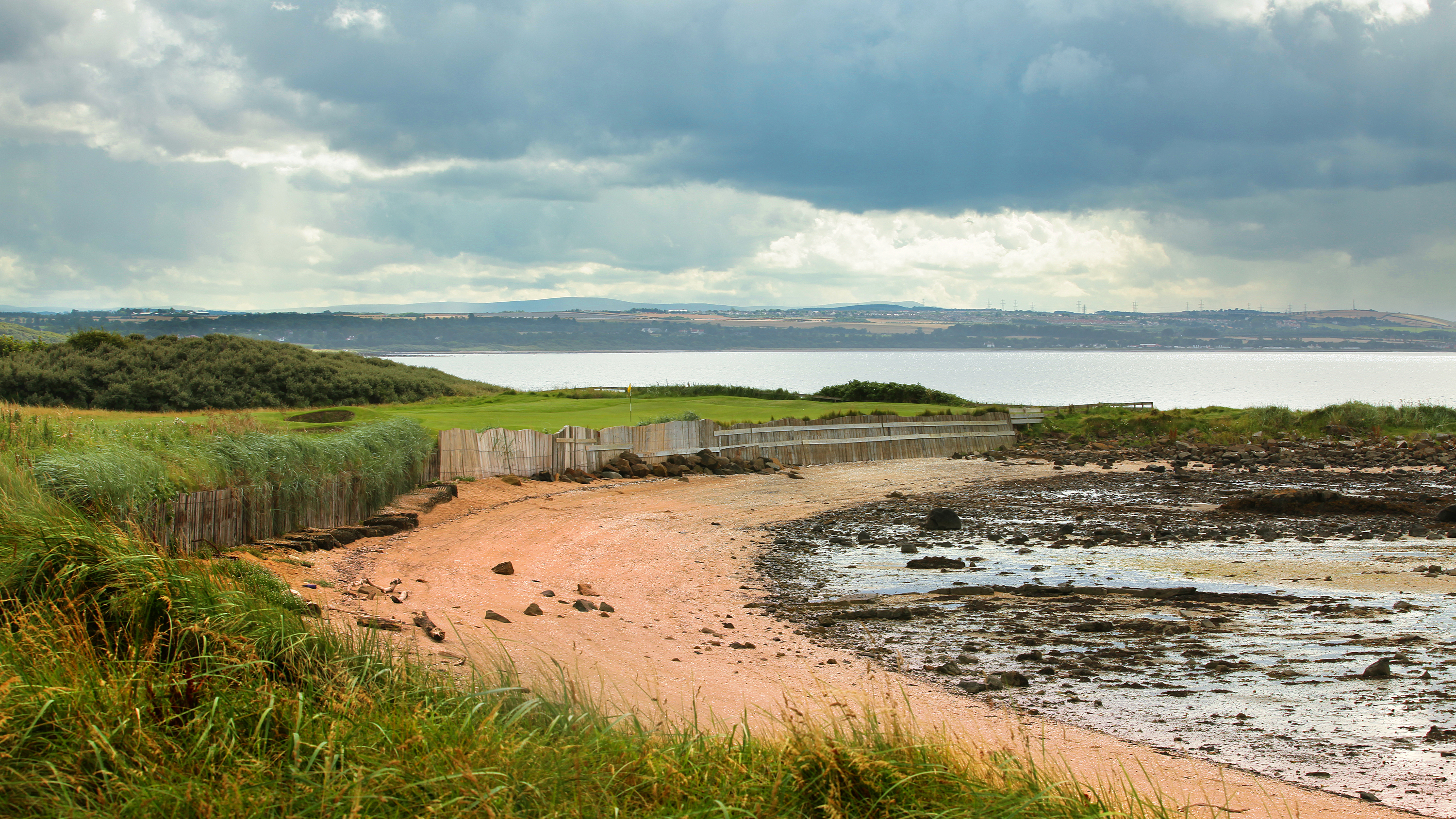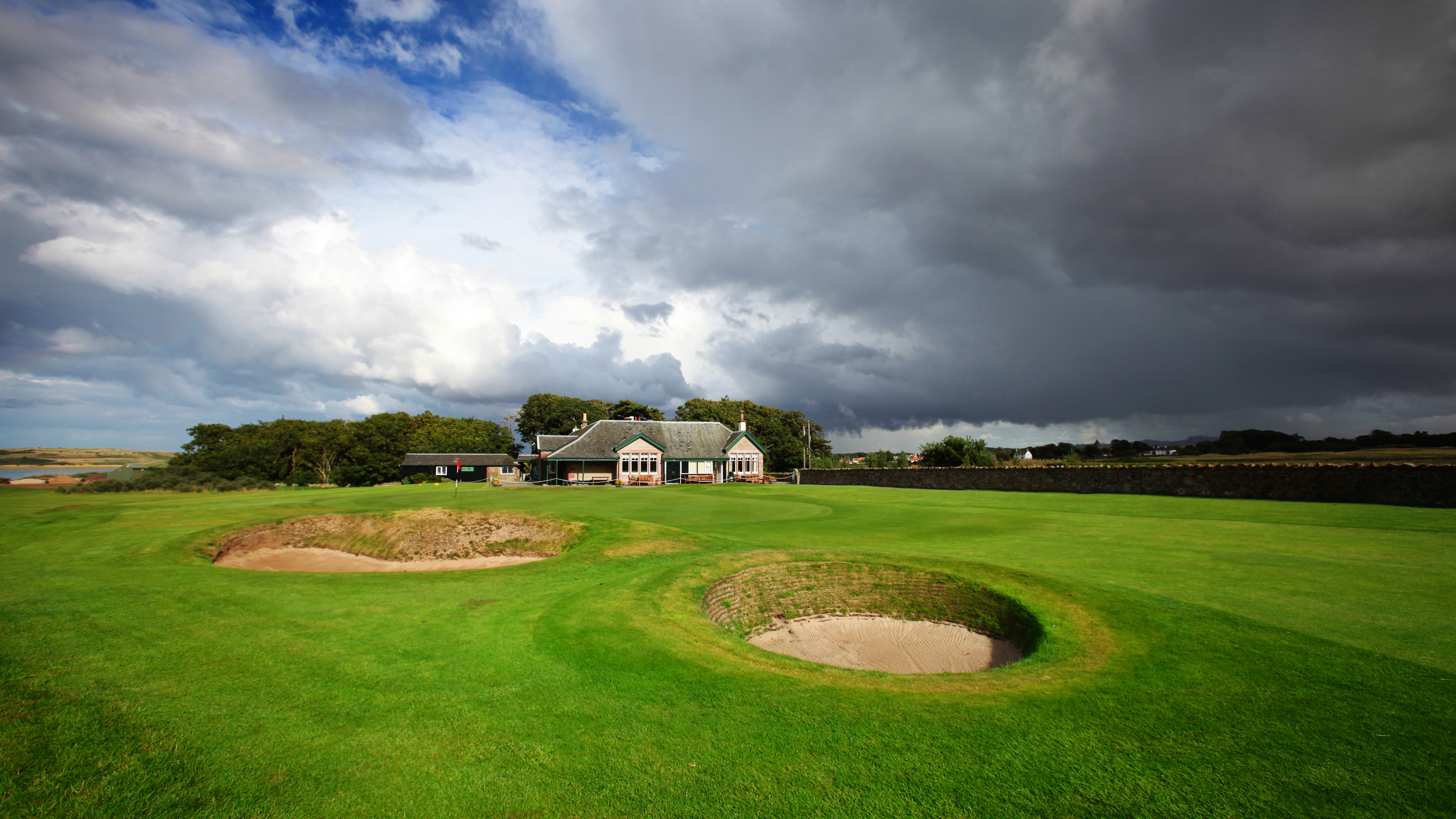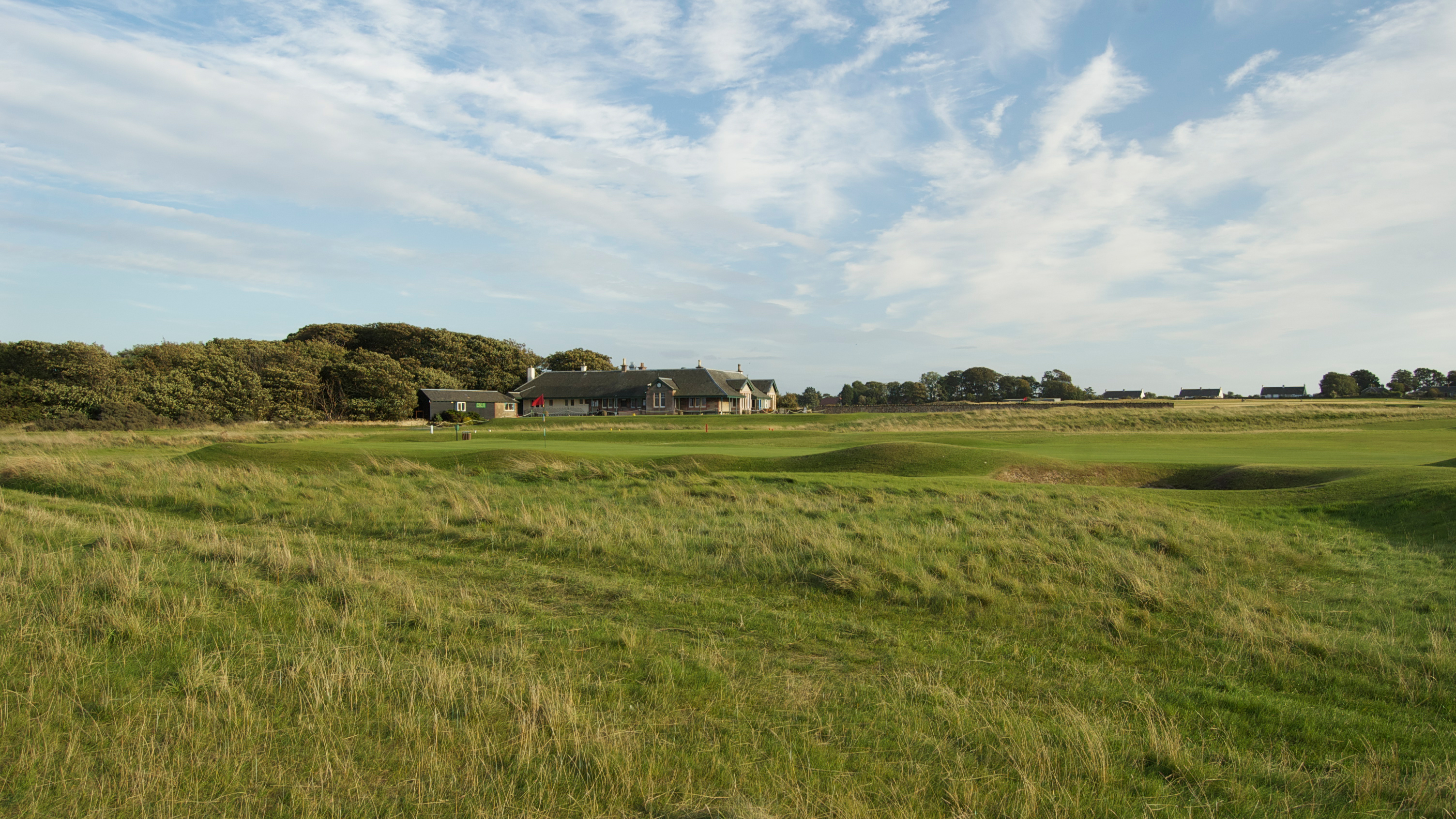Kilspindie Golf Club Course Review
Kilspindie is a wonderful little links in a beautiful setting on the shores of the Firth of Forth by Aberlady


Kilspindie Golf Club Course Review
GF From £75 to £95
Par 69, 5,494 yards
Slope 108
GM Verdict – A lovely little links course in a beautiful setting, full of character and charm
Favourite Hole – 8th. A great par-3 where you play over beach, sea and sleepered shoreline

The 18th and Clubhouse at Kilspindie
Kilspindie began life as Luffness Golf Club in 1867 but the club split in 1894 with one half going on to become Luffness New Golf Club and the other becoming Kilspindie Golf Club after being renamed in 1899. The land on which the course at Kilspindie sits had been used for golf before but the links, designed by Willie Park Jr and Ben Sayers was officially opened in November 1898. Just outside the village of Aberlady, Kilspindie is an extremely picturesque track with lovely views over the Firth of Forth. It’s a wonderful little links that is supremely fun to play. It’s very natural and open, making great use of the terrain, and is one of the best golf courses in East Lothian.

The 4th at Kilspindie
The course begins with an attractive par-3 playing out towards the coast before turning along the shoreline for the excellent par-5 2nd. A couple of strong par-4s follow before the first of the driveable par-4s on the 5th. Like the 5th, the 6th measures less than 300 yards but three bunkers short of the green means it’s a tough ask to get on with the drive. The 8th is a stunning wee short hole “Gosford Bay.” From the back right tees your shot must clear beach, sea and sleepered shoreline to reach the green safely.

The 16th at Kilspindie
There are some memorable holes on the back nine – The short 13th where you play over or through an old wall and the driveable 17th where the wall is a feature again. The home hole is a dinky par-4 offering the chance of a late birdie, playing right back to the welcoming clubhouse. Watch out for the “target” and the “magazine” out on the course, at the 5th and 12th tees respectively. These little buildings used to be just that up to the end of the First World War, as the local territorial army unit used the course.
Subscribe to the Golf Monthly newsletter to stay up to date with all the latest tour news, equipment news, reviews, head-to-heads and buyer’s guides from our team of experienced experts.

Fergus is Golf Monthly's resident expert on the history of the game and has written extensively on that subject. He has also worked with Golf Monthly to produce a podcast series. Called 18 Majors: The Golf History Show it offers new and in-depth perspectives on some of the most important moments in golf's long history. You can find all the details about it here.
He is a golf obsessive and 1-handicapper. Growing up in the North East of Scotland, golf runs through his veins and his passion for the sport was bolstered during his time at St Andrews university studying history. He went on to earn a post graduate diploma from the London School of Journalism. Fergus has worked for Golf Monthly since 2004 and has written two books on the game; "Great Golf Debates" together with Jezz Ellwood of Golf Monthly and the history section of "The Ultimate Golf Book" together with Neil Tappin , also of Golf Monthly.
Fergus once shanked a ball from just over Granny Clark's Wynd on the 18th of the Old Course that struck the St Andrews Golf Club and rebounded into the Valley of Sin, from where he saved par. Who says there's no golfing god?